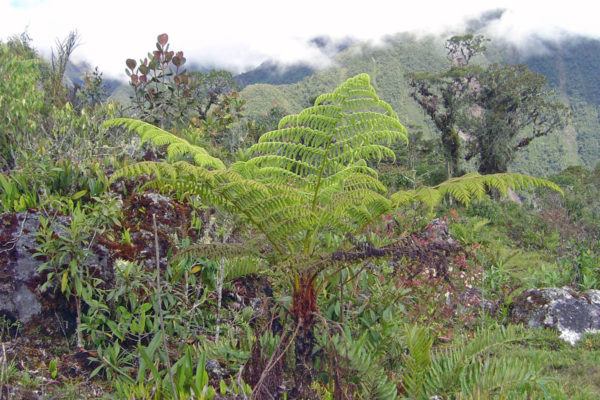Videos spotlight university ‘pioneers’ in GMO plant research
A new oral history series on the contributions of pioneering plant genetics researchers includes online video interviews with two professors who have strong ties to Arts & Sciences at Washington University in St. Louis: Glenn Stone and Mary-Dell Chilton.
Without plants, there is no life
Botanists have organized to try to stem the frightening loss of plant species across the globe. How well are they doing? They recently met in St. Louis to exchange stories from the botanical front lines.
Plant polymerases IV and V are special forms of Polymerase II
It’s a little like finding out that Superman is actually Clark Kent. A team of biologists at Washington University in St. Louis has discovered that two vital cellular components, nuclear RNA Polymerases IV and V (Pol IV and V), found only in plants, are actually specialized forms of RNA Polymerase II, an essential enzyme of all eukaryotic organisms, including humans.
Researchers solve piece of large-scale gene silencing mystery
PikaardA team led by Craig Pikaard, Ph.D., WUSTL professor of biology in Arts & Sciences, has made a breakthrough in understanding the phenomenon of nucleolar dominance, the silencing of an entire parental set of ribosomal RNA genes in a hybrid plant or animal. Since the machinery involved in nucleolar dominance is some of the same machinery that can go haywire in diseases such as cancer, Pikaard and his collaborators’ research may have important implications for applied medical research. Click here for a podcast from Genetic Engineering & Biotechnology News: Interview with Craig Pikaard.
Study on wildlife corridors shows how they work over time
Ellen Damschen & Forest ServiceA new paper on ecological corridors co-authored by Washington University biologists Ellen Damschen and John Orrock in the Proceedings of the National Academy of Science, was published online Dec. 1 as part of a special issue on movement ecology. This research reveals that by understanding how species move, you can predict if and how corridors work.
New gene silencing pathway found in plants
Biologists at Washington University in St. Louis have made major headway in explaining a mechanism by which plant cells silence potentially harmful genes. A team led by Craig Pikaard, Ph.D., WUSTL professor of biology in Arts & Sciences, has published a paper this month in Cell, that explains how RNA polymerases work together to use the non-coding region of DNA to prevent destructive, virus-derived genes from being activated.
New techniques create butanol
Lars Angenent in his lab.A team of researchers headed by Lars Angenent, Ph.D., assistant professor of energy, environmental and chemical engineering at Washington University in St. Louis, is plying new techniques to produce a biofuel superior to ethanol.
Botanical ‘cloak-and-dagger’
Photo by David KilperThat clover necklace you make for your child could be a ring of poison. That’s because some clovers have evolved genes that help the plant produce cyanide — to protect itself against herbivores such as snails, slugs and voles. Kenneth Olsen, Ph.D., assistant professor of biology in Arts & Sciences, is looking at the genetics of a wide variety of white clover plants to determine why some plants do and some plants don’t make cyanide. Ecology and geography play important roles.
Botanical ‘cloak-and-dagger’
Is that clover necklace you make for your child poison? It could be. Kenneth Olsen, Ph.D., Washington University assistant professor of biology in Arts & Sciences, is looking at the genetics of a wide variety of white clover plants to determine why some plants do and some plants don’t make cyanide. Ecology and geography play important roles.
Genetic differences in clover make one type toxic
David Kilper/WUSTL PhotoOlsen is studying the genetics of two types of clover to determine why one type is cyanogenic (toxic) and the other is not.That clover necklace you make for your child could well be a ring of poison. That’s because some clovers have evolved genes that help the plant produce cyanide — to protect itself against little herbivores, such as snails, slugs and voles, that eat clover. Other clover plants that do not make cyanide are found in climates with colder temperatures. So, in picking your poison, er, clover, ecology and geography play important roles. A plant evolutionary biologist at Washington University in St. Louis is trying to get to the bottom of this botanical cloak and dagger tale.
View More Stories

